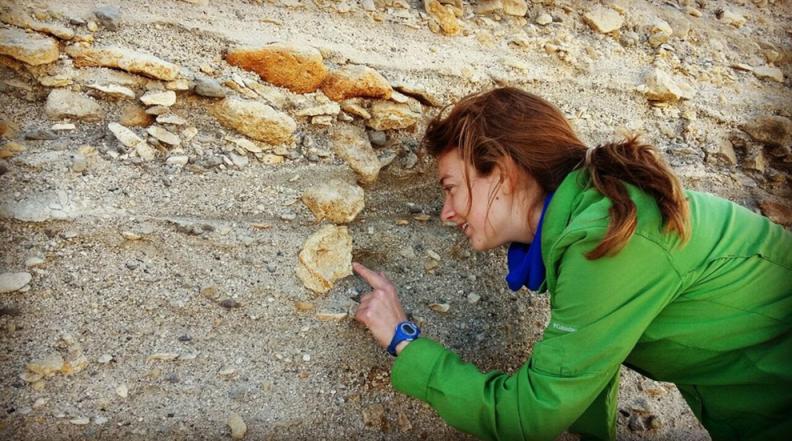Dana Peterson, Ph.D. student in EAS, knew she wanted to study something related to math and science in college, she just wasn’t sure what – until she watched an episode of NOVA about volcanoes.
“I remember an interview with a female scientist on the side of a volcano explaining how geophysics can be used to analyze the inner workings of a volcano as well as inform eruption hazards,” said Peterson. This experience prompted her to research geophysicists at her current ungraduated institution, the University of Wisconsin-Madison.
Peterson contacted Dr. Cliff Thurber about getting experience in his lab to learn more about geophysics which ended up inspiring her passion for seismology. After finishing her undergrad, Peterson went on to work at the Earth Observatory of Singapore where she learned how to acquire and interpret active source seismic reflection data.
Peterson was drawn to Cornell by Associate Professor Katie Kernanen’s projects which involved fieldwork and used both active and passive source seismic data to study a wide array of tectonically active areas, including the Cascadia subduction zone and the Laguna del Maule volcanic field.
Professor Keranen has challenged Peterson to acknowledge and hone her weaknesses and push herself beyond her perceived capabilities. Peterson integrates geophysical methods to study tectonically active and potentially hazardous areas. She uses seismic reflection data to study subduction zone faults and properties offshore Cascadia to better characterize the megathrust interface.
Peterson also maps upper crustal faults and studies magma-tectonic interactions at the Laguna del Maule volcanic field in Chile by combining acoustic reflection data, magnetics and earthquake focal mechanisms. Her most recent work is with airborne electromagnetic and magnetic data to map altered rocks in order to model slope stability at Iliamna Volcano in Alaska.
Peterson started a new full-time job with the US Geological Survey in Denver, CO while simultaneously finishing her thesis. She completed a yearlong NSF GRIP internship there previous to beginning her full-time role. “My work so far has focused on volcano hazards (which will be my third thesis chapter) and subsurface modeling of the mid-continent rift,” said Peterson who hopes to defend her thesis later this year.
One of her favorite things about EAS is the comradery among the graduate students. “We push and inspire each other scientifically, and look out for each other personally,” said Peterson. She also fondly remembers Emeritus Professor Muawia Barazangi’s frequent visits to the seismology lab.



